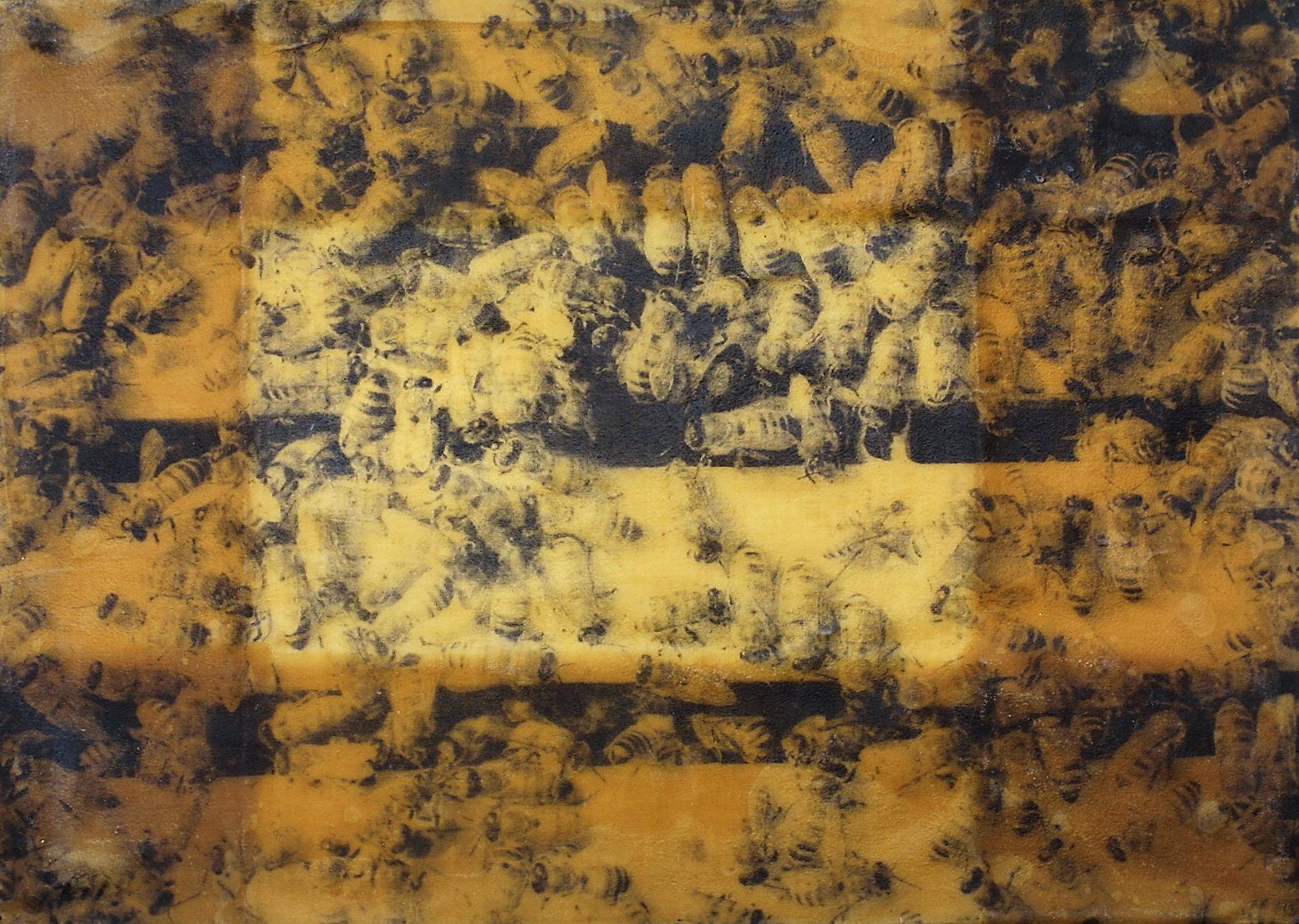“The deeds you do to the smallest,
you do to yourself”
– an interview with Ritva-Liisa Virtanen
To artist and beekeeper Ritva-Liisa Virtanen it was clear from an early age that she wanted to live a life immersed in nature. She remembers spending her childhood summers in rural Kainuu picking berries and mushrooms with her family, building a strong connection with nature.
In her early twenties she made a choice which could be considered a bold move for a young person and moved into a small house in the forest in Savonranta, a small municipality in the province of Eastern Finland. Already a trained artist, Virtanen and her partner got their first bees a couple of years later. For the first five years they tended to the hives on the lakeside with a rowing boat before reluctantly accepting a pickup Moskvitsh from Virtanen’s father, who thought it was impossible to live in such a rural environment without a car.
Touched by a bear.
As Virtanen became more and more enchanted with bees, they started to appear in her art. At first she remembers being intimidated to portray these extraordinary creatures as she was so humbled in front of them. Over three decades living close to nature, beekeeping and fine arts have woven into a lifestyle, where it is impossible to determine where one thing ends and another begins.
”When I’m taking care of the bees I’m making art and when I’m making art I’m taking care of the bees. I find them mesmerizing and visually inspiring. Everything I have learned, I have learned from the bees.”
This connection with nature as well as the beauty and wisdom of bees has inspired Virtanen to portray beelife in woodcuts, paintings, art graphics, textiles, photographs and videos as well as installations combining different techniques. Her humble and silent approach to life and her work has produced powerful, visually stunning artworks that speak about connection and grace. During her career the awareness of the crucial role pollinators play in the ecosystem as well as their threat of extinction has grown. While Virtanen avoids drawing attention to herself, she does discuss environmental themes for example in the context of her exhibitions.
”Small, silent deeds move things forward”
Virtanen describes her creative process has a lot of room for freedom. From an outside eye her studio can seem a complete mess with pathways in between unfinished projects, different materials and objects. Virtanen says that she finds a certain level of disorganization pleasant. When she enters her studio in the morning she doesn’t know what she will make that day. She starts with something and is often surprised about the end result.
At times Virtanen questions whether it is justified to show nature in such a beautiful way in her art. The cut down forest behind the photographer’s back is not shown in the picture, yet it is there. We need to resolve the bee-question, says Virtanen. For example the natural compound solutions that have been developed to fight parasites like the Varroa mite that arrived in Finland in the 80’s, show that we humans can change things for the better, if we come to our senses.
Next summer Virtanen plans to build a small hut which will host two beehives as well as a small desk and platform for her to sleep in. This is where she can be with the bees in her old age, she laughs. She says she loves spending time with the bees, often placing a hammock close to a hive and letting the buzzing bees lull her to sleep.






